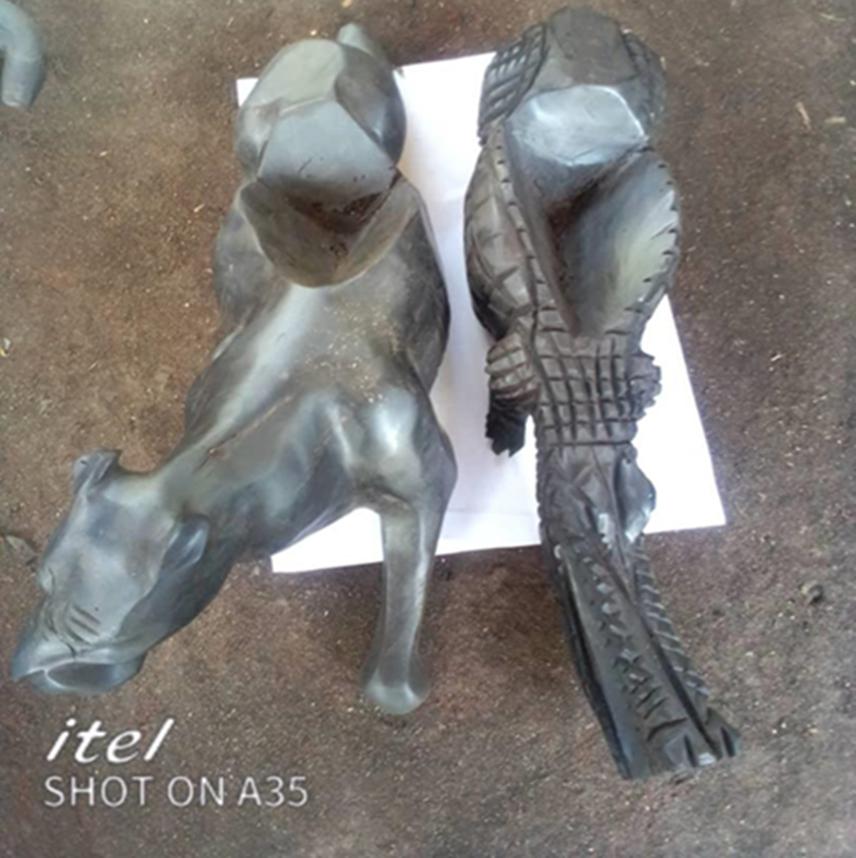Yves Komo Mbarga
Diospyros crassiflora (ebony) is a species that is widespread across the lower Guinean and Congolian lowland evergreen forests of Africa. The tree is valued for black wood cabinetry and furniture (Letouzey and White 1970). Additionally, it is utilized for shipbuilding; musical instruments (particularly, the black keys of pianos, guitars, fingerboards (Lemmens et al., 2012; Taylor, 2012). In Cameroon, the species is also used for medicinal purposes and pharmacological research and has been verified to possess antifungal and antibacterial properties of stem bark extracts in vitro (Tangmouoet al., 2006; Dzoyem et al., 2007). The African ebony tree may be overexploited, threatening its long-term sustainability. With over 1200 trees harvested per year; Cameroon is the first ebony wood exploiter. The species has lost more than 16% of its tree population in the last 120 years.

This picture shows an example of products obtained by the sculptors.
The goal of this research is to help build conservation measures for the endangered African ebony tree Diospyros crassiflora in the rainforest of southern Cameroon. More precisely, it will:
1. identify the main uses of D. crassiflora by the local population surrounding the Campo Ma'an National Park.
2. evaluate the impact of anthropogenic factors on regeneration, structure, and population dynamics of D. crassiflora in the National Park.
3. assess the potential seed dispersers of D. crassiflora.
4. sensitize local the population on the importance of D. crassiflora plays in maintaining the ecological balance of the forest ecosystem.
5. make recommendations on strategies to sustainably manage ebony wood exploitation in the study area.
Fieldwork will be conducted in the Campo Ma’an National Park in three phases. To begin, we will perform an ethnobotanical survey among the local people using a survey form to determine the usage of D. crassiflora by the local population in the area and to understand the unknown threats to the species in the study area. Additionally, a floristic survey will be conducted to ascertain the distributional pattern of D. crassiflora in the study area. We will also install camera traps to help identify the main seed dispersers of D. crassiflora in this forest ecosystem. The findings will be provided to Cameroon's local authorities in charge of forest protection, and they will serve as a baseline document for adopting conservation actions for this and other locally threatened flora species.